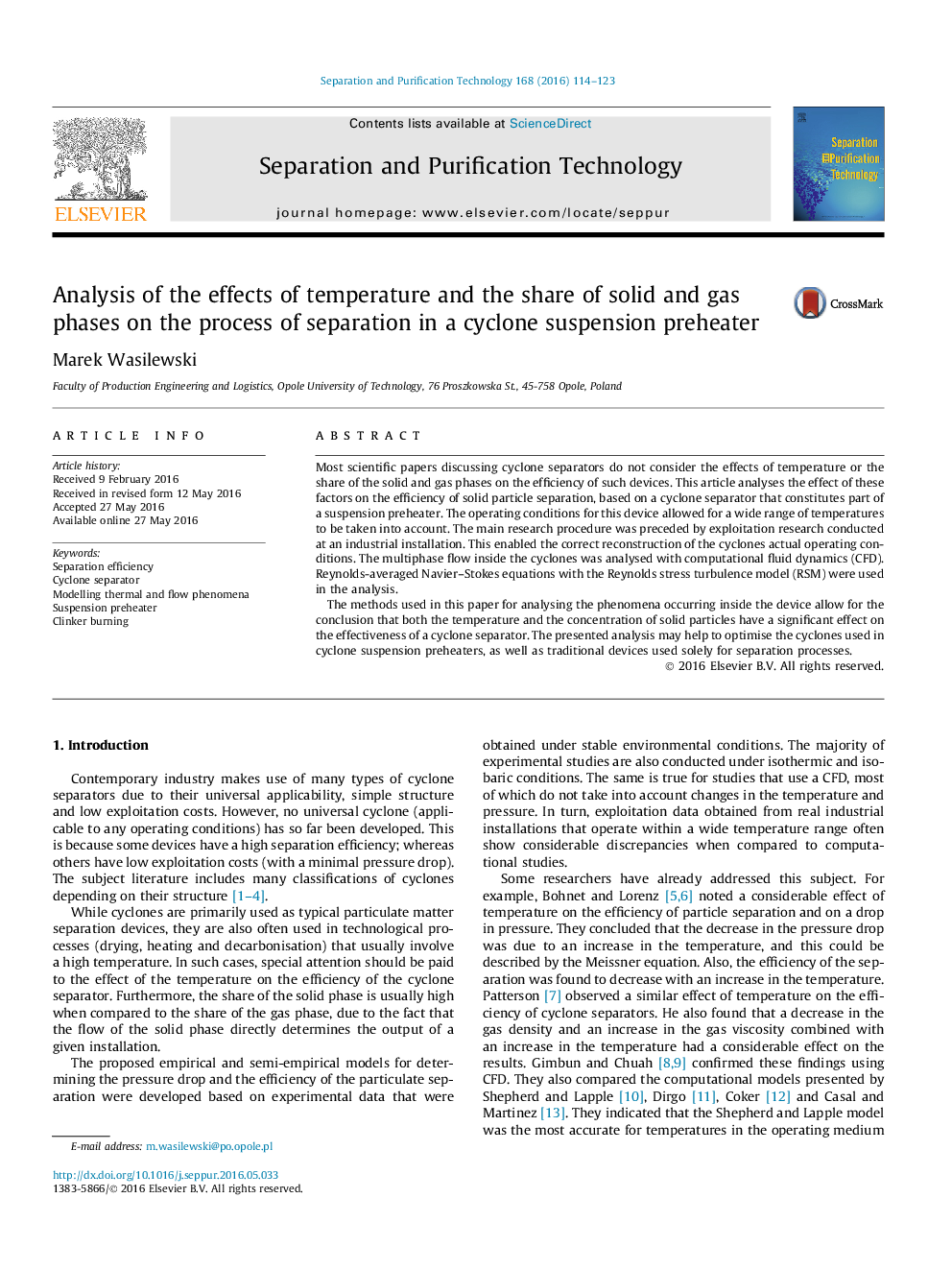| Article ID | Journal | Published Year | Pages | File Type |
|---|---|---|---|---|
| 640049 | Separation and Purification Technology | 2016 | 10 Pages |
•The CFD results were highly similar to those obtained in an industrial installation.•The efficiency of the separation decreased with an increase in the temperature.•The efficiency of the separation increase with an increase in the share of the solid phase.•The conclusions may help to increase the efficiency of cement production processes.
Most scientific papers discussing cyclone separators do not consider the effects of temperature or the share of the solid and gas phases on the efficiency of such devices. This article analyses the effect of these factors on the efficiency of solid particle separation, based on a cyclone separator that constitutes part of a suspension preheater. The operating conditions for this device allowed for a wide range of temperatures to be taken into account. The main research procedure was preceded by exploitation research conducted at an industrial installation. This enabled the correct reconstruction of the cyclones actual operating conditions. The multiphase flow inside the cyclones was analysed with computational fluid dynamics (CFD). Reynolds-averaged Navier–Stokes equations with the Reynolds stress turbulence model (RSM) were used in the analysis.The methods used in this paper for analysing the phenomena occurring inside the device allow for the conclusion that both the temperature and the concentration of solid particles have a significant effect on the effectiveness of a cyclone separator. The presented analysis may help to optimise the cyclones used in cyclone suspension preheaters, as well as traditional devices used solely for separation processes.
Graphical abstractFigure optionsDownload full-size imageDownload as PowerPoint slide
